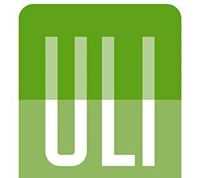WASHINGTON – January 18, 2015 – (RealEstateRama) — January is National Radon Action Month and the U.S. Environmental Protection Agency (EPA) encourages Americans around the country to test their homes for radon, the second leading cause of lung cancer. Make 2016 a healthier, safer new year by testing your home.
Each year about 21,000 Americans die from lung cancer caused by exposure to radon. Testing is the only way to know if your home has an elevated level of radon. The U.S. Surgeon General and EPA recommend taking action to fix your home if the radon level is 4 picocuries per Liter (pCi/L) of air or more. You should contact a qualified radon mitigation contractor if your test result is 4 pCi/L or more.
“Testing your home for radon is one of the easiest ways to help keep your family safe and healthy,” said Janet McCabe, Acting Assistant Administrator for EPA’s Office of Air and Radiation. “Radon exposure is preventable. Test kits are inexpensive and readily available. Reducing exposure protects families, saves lives and avoids the health care costs of radon-caused lung cancer. Everyone who takes action helps to make America’s homes and schools safer for future generations.”
Affordable do-it-yourself radon test kits are available online, at many home improvement and hardware stores and are easy to use. You can also hire a qualified radon professional. If your home is found to have a high radon level, a professionally installed radon reduction system, using a vent pipe and exhaust fan, will remove the radon from beneath your home and discharge it outside. These systems are affordable, especially compared to the risk of lung cancer.
Taking action to reduce your exposure to radon is a long-term investment in your health and your home. A working mitigation system is a positive selling point for homes on the market; in many areas a radon test is a standard part of real estate transactions. If you’re building a new home, work with your builder to include radon-resistant construction techniques.
Radon reduction strategies are included in the National Radon Action Plan, which was launched in November 2015 by EPA, the Department of Housing and Urban Development, the Department of Health and Human Services, and nine national non-governmental organizations. This partnership will help coordinate radon reduction efforts and resources with the goal of preventing 3,200 lung cancer deaths annually by 2020, through increased collaboration and consumer awareness strategies.
For more information on testing and obtaining a radon test kit, contact your state radon office at 1-800-SOS-RADON. You can also find a qualified radon professional and learn more about the National Radon Action Plan partnership at http://www.epa.gov/radon.
Join EPA’s Janet McCabe and the American Lung Association for a Twitter chat on Thursday, January 21 at 3 p.m. ET to learn more about radon and what you can do to protect your family. Use the #TestForRadon hashtag to participate.
Contact Information: Christie St. Clair, (202) 564-2880,
















